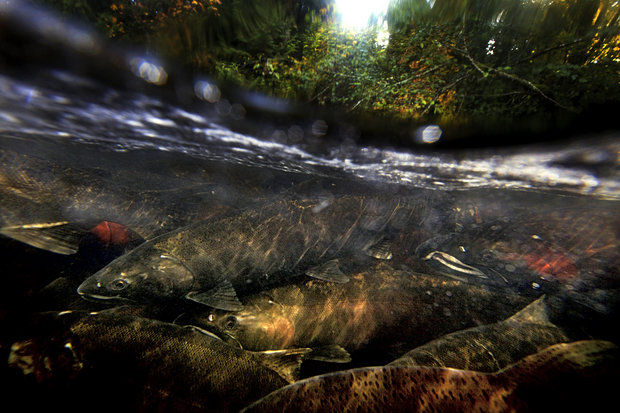forum
library
tutorial
contact

A 21st-Century Blueprint for Saving
Oregon Species from Climate Change
Bill BradburyThe Oregonian, April 20, 2013
|
the film forum library tutorial contact |

|
A 21st-Century Blueprint for Saving
Bill Bradbury |
 You don't have to leave western Oregon to witness the escalating impacts of climate change.
You don't have to leave western Oregon to witness the escalating impacts of climate change.
On Mount Hood, river-feeding glaciers thousands of years old have shrunk by as much as 60 percent in the past 100 years.
In the often water-starved Klamath Basin, average summer temperatures are projected to increase by more than 10 degrees by 2075, with surrounding snowpack levels expected to decrease by as much as 90 percent.
In the Columbia River, average August and September water temperatures are already pushing levels that disrupt salmon migration, and they're projected to rise another 4 degrees by midcentury.
Given those pressing realities, I read with great interest the plan just released by the Obama administration to help America's wildlife adapt to the rapid habitat changes caused by global warming. Much of the plan's focus is on plants and animals protected under the Endangered Species Act. The act, which turns 40 this year, is not without its critics, and I can be frustrated by how long it can take to get protection for critically imperiled species and, once they're listed, how long it can take to get a recovery plan in place.
Yet, when we use it as intended, the law can have a tremendous impact. More than 90 percent of the species it protects have been saved from extinction, and hundreds are on the road to recovery. Here in Oregon, some of our most cherished species -- from coho salmon to gray whales and bald eagles -- owe their existence to the Endangered Species Act.
But as we move through the climate-fueled challenges of the 21st century, we're entering uncharted waters in the battle to preserve the broad diversity of life critical to our planet's future.
The Obama administration's new plan includes a series of mitigation measures for wildlife, including protecting corridors that allow animals to move to more suitable habitat as climate change alters ecosystems. It's an intriguing idea, but will it be enough? Or is it simply an incremental step in a much longer journey we've yet to commit to?
We're entering uncharted waters in the battle to preserve the broad diversity of life critical to our planet's future. What "corridor," for example, can help coho salmon escape the ever more heated Columbia River? And consider the plight of Oregon's fast-disappearing wolverines. Scientists have known for some time now that wolverines require at least 5 feet of spring snowpack in the high-mountain terrain where they dig protective dens.
So it was hardly surprising that when proposing Endangered Species Act protections for wolverines earlier this year, U.S. Fish and Wildlife Service scientists cited climate change as the greatest threat to the 300 or so of the solitary predators that remain from Oregon and Washington to the northern Rockies. Unchecked, temperature increases could very likely wipe out wolverines in the Lower 48 before the end of this century.
Yet, just as was the case when polar bears were listed as "threatened" in 2008, federal wildlife managers declared that any protections extended to the wolverine would not include regulation of greenhouse gas pollution -- the leading driver of rising global temperatures that are threatening wolverines and degrading the planet we all share. That troubling dichotomy reflects the need for a dramatic change in our current political climate, one in which elected officials can be far too quick to trade critically important long-term conservation and economic benefits for the exaggerated benefits of short-term economic gain.
Whenever we're ready, even the most challenging policy solutions are within reach. We need only glance back at the confident steps taken to preserve the national bird we now routinely see soaring above the Willamette River for a model of how to move forward. We not only used the Endangered Species Act to protect bald eagles from being killed and captured -- much as we're proposing to do with the wolverine -- but we also banned pesticides such as DDT. In the process of protecting the eagle's habitat, as required by the Endangered Species Act, we cleaned up the waterways critical to our own health and economic stability.
The sooner we realize that protecting our environment and our economy is not an "either-or" proposition, the more quickly we can get down to the work of building a sustainable bridge to the future that's anchored in the reality of our times.
Only then will we have a real shot at protecting Oregon's irreplaceable ecosystems, from the high-mountain home of wolverines and our winter sports industries to the rivers critical to the future of our salmon runs, as well as our commercial and recreational fishing interests.
learn more on topics covered in the film
see the video
read the script
learn the songs
discussion forum
